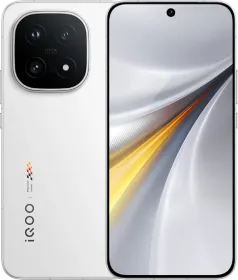We have been testing the OnePlus 15’s cameras for several days now, taking more than 800 photos in every possible condition to understand what has actually changed since the OnePlus 13. Is it better than the OnePlus 13 or worse?
This is the first major OnePlus flagship without Hasselblad tuning and the first to use the new DetailMax Engine as its primary processing backbone. With smaller rear sensor sizes, different tuning (at least in the name), and an updated front camera, this year’s imaging setup takes a different direction compared to the OnePlus 13. Let’s take a closer look in this dedicated camera review.

When news broke that Hasselblad was out, people panicked. But that’s not the whole story, the DetailMax Engine replaces most of what made Hasselblad’s color tuning appealing.
But yes, the hardware has changed, and technically, it’s a downgrade from the 13.
| Sensor | Aperture | Focal Length | |
| Main | Sony IMX906, 1/1.56-inch | f/1.8 | 1X, 24mm, OIS, AF |
| Ultra-wide | OV50D, 1/2.88-inch | f/2.0 | 0.6X, 16mm, OIS, AF |
| Telephoto | Samsung JN5, 1/2.75-inch | f/2.8 | 3.5X, 85mm, OIS, AF |
| Front | Sony IMX709, 1/2.74-inch | f/2.4 | 21mm, AF, RGBW |
In short, smaller sensors across the board, except for the selfie, which finally gets autofocus.
The DetailMax Engine fuses multiple frames (HDR + resolution data) to create a 26 MP output on all lenses. The results are good. Note that the 26 MP default image doesn’t work in low light scenarios, as the sensor has to use 4:1 pixel pinning to compensate for the low light.
Main Camera
Daylight images look crisp and natural, with excellent color balance and no oversharpening in most scenarios. The Snapshot Mode is also available, and it captures moving subjects well, making it perfect for street, kids, or bird photography. Modes like Silhouette, Fireworks, and Stage are still here, and they work well.
Dynamic range is wide, though in extreme backlit scenes you might notice halo artifacts around bright edges. Motion blur is mostly gone, and shutter lag is almost nonexistent.












In low light, auto night mode does well balancing highlights, though you’ll get the best results by manually toggling Night mode for extra contrast. Noise levels are controlled, but textures can look artificial and smoothed when zoomed in. Images can also be brighter than expected.






Telephoto
The new 3.5X telephoto sensor is a downgrade from the 3X telephoto on the OnePlus 13, as it uses a much smaller sensor and also a narrower aperture. Nonetheless, it still delivers good results in daylight, even at 7X. OnePlus calls it lossless zoom but it’s not really that.
Beyond 10X, the AI becomes a bit aggressive in my opinion. This is especially evident when zooming indoors. It’s still better than some of the competition, surprisingly, despite having weaker hardware, but the AI is still there.





The telephoto can focus as close as 30 cm, an improvement over the OnePlus 13’s 48 cm at 3X. So, you can get great macro-like shots at 7X with the right lighting.
In extreme low light conditions, the lens tends to switch to a main-sensor crop; and there is no option to disable that. Otherwise, even when you have a few light sources, the camera uses the actual 3.5X zoom.






ALSO READ: iQOO 15 Camera Impressions: 500 Photos Later
Ultra-wide
The ultra-wide doubles as a macro lens, but the results vary. Daylight shots are good, with accurate distortion correction and color parity with the main lens. Edge detail softens a bit, and in low light, details are lost and a lot of smoothening creeps in. The dedicated ultra-wide macro mode is okay but not particularly sharp. You can get better results by using the main sensor crop though.









Portraits
Portrait mode is excellent. Edge detection is improved compared to the 13, and skin tones look more authentic. The background blur feels more natural, though the depth compression isn’t as good as refined as last year in my opinion, at 1.5X and 2X. You can continuously zoom all the way from 1X to 3.5X in the Portrait mode.






Selfies
I’m not a selfie guy but the selfies from the OnePlus 15 look good to me. The addition of autofocus means you’ll have sharper selfies in group photos and also solos. It does get a bit softer in low light but it’s still better than most other flagships. It’s also 21mm, so pretty wide.
Master Mode and XPAN Are Still Here
The new Master Mode lets you shoot in JPG, JPG Max, RAW, and RAW Max with full control over ISO, shutter, and tone. The new Neon and Cold/Warm Flash filters are really nice additions. Personally, Neon is my new favorite, followed closely by Serenity.













You would think that with Hasselblad now gone, the XPAN mode would not be available on the OnePlus 15 but that’s not the case. You can use the new widescreen aspect ratio in the Photo mode to get that XPAN like photos or go into the Photos and crop your photo to the XPAN aspect ratio. Sure, it’s not the same as shooting XPAN directly but it’s there.



ALSO READ: OxygenOS 16 Review: Complete List of All the New Features and Changes
Video
The video capabilities of the OnePlus 15 are great. You get 4K 120 FPS recording with Dolby Vision HDR, though this 120 FPS mode only works on the main sensor. The telephoto is capped at 4K 60 FPS.
Still, the quality is really good. And with real-time tone mapping, the OnePlus 15 keeps the subject and background distinct, so exposure transitions and skin tones are handled well. Basically, the phone applies separate auto white balance to the subject and background.

OnePlus has also finally added the ability to switch between the front and the rear camera during video recording (up to 4K 60 FPS). They’ve also upgraded the portrait video mode to 4K 30 FPS, and it’s available on both the main camera and the 3.5X telephoto.
The stabilization is pretty good on all lenses, including the front. And the overall video quality on the OnePlus 15 is impressive. What makes it even more impressive is the addition of a Pro Video mode that now supports O-Log recording and live LUT preview.

The front camera footage looks clean with nice skin tones, though HDR can be a bit heavy-handed under harsh light. Still, the addition of autofocus makes it one of the best selfie cameras on any OnePlus device right now.
After taking more than 800 photos and testing every camera mode, the OnePlus 15 clearly moves in a different direction compared to the OnePlus 13. The processing has improved in many situations, and the front camera finally gets the upgrade it needed.
At the same time, the rear hardware has been downgraded, and that becomes noticeable in low light, long range zoom, and some other areas like depth of field. Overall image quality feels more like a side-grade rather than a step forward.
ALSO READ: OnePlus 15 Review: The Most Powerful OnePlus, But Is It The Most Balanced?

You can follow Smartprix on Twitter, Facebook, Instagram, and Google News. Visit smartprix.com for the latest tech and auto news, reviews, and guides.



























































